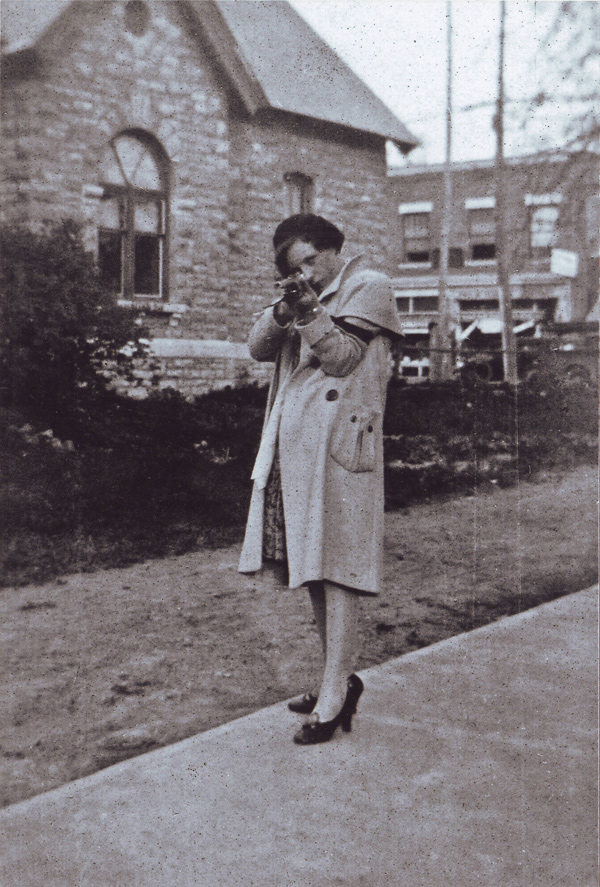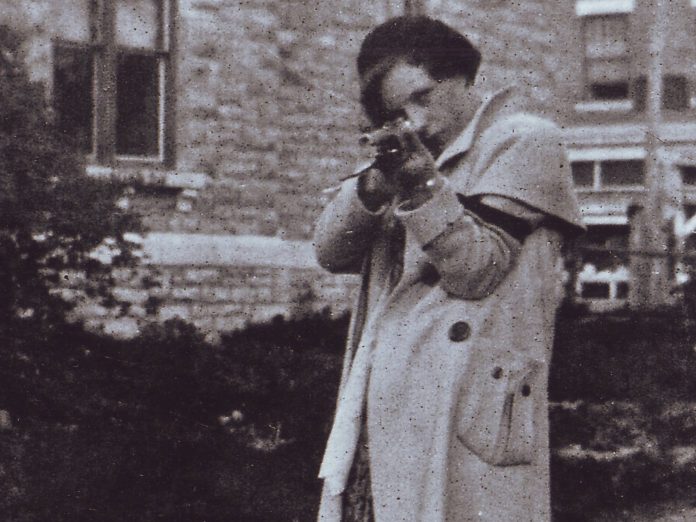By Dave Allston –
Sporting clubs were the centre of social life in the first half of the twentieth century. Recently, I was told about a sporting club that existed for only a few years during the Great Depression. It’s one of the most surprising, unique and intriguing stories in Westboro’s history. Would you believe that Westboro was once home to a rifle shooting club? That it held its practices inside All Saints Church on Richmond Road? And was made up entirely of teenage girls? It’s hard to believe, but it’s true.

The Anglican Girls’ Rifle Club of Westboro was formed in January 1929, when a group of twelve girls between the ages of 16 to 19 met on a wintry Friday evening in the parish hall of All Saints Church. The inaugural shoot was a hit and it turned out to be the starting point for a very successful and dedicated group.
Shooting clubs had become popular in the 1800s. Clubs existed in Ottawa as early as the 1860s but they were exclusively for males. The first women’s rifle club came after the outbreak of war in 1914 when a group of 24 girls assembled at Lisgar Collegiate, likely as an act of patriotism. The group was allotted time in the rifle range (which was located in the attic of the school). That club reformed in the fall of 1928, as did a new club at Glebe Collegiate, perhaps prompting the young ladies in Westboro to start a club of their own.
The Anglican Girls’ Rifle Club met weekly throughout the winter and spring of 1929 and quickly grew to over 20 members. Lucy Carver was selected as its first captain. Two Westboro merchant families generously supported the club. The Ports (United Cigar, Westboro Feed and later Port’s Lunch) and the Andersons (Westboro Garage) provided guidance, prizes, and updated equipment.
Weekly competitions were held as practice for monthly “spoon shoots,” in which the winner received a trophy spoon. There were also special team shoots, including “chum shoots” (the name referred to the fact that “pairs of chums” competed together) and “goose shoots,” in which the top contenders won a Christmas goose.
The group trained under Dominion of Canada Rifle Association regulations and alternated between shooting on multi-coloured DCRA “decimal targets” and “King’s Trophy” targets. They would fire at 20 or sometimes 25 yards, typically using .22 calibre B.S.A. rifles, and used the “decimal system” of scoring. A competition usually featured five shots prone and five shots sitting.
Accounts of the competitions feature curious details such as: “Peggy Whitehurst scored a possible, consisting of four bulls in one group egg pool and one bull at six o’clock” or “Mary Eastman ably demonstrated she could make a top poker hand with bullets, in scoring a royal flush, and all shots were on the target.” A notable top individual performance was by Edith Johnson, who on November 30, 1929, hit ten consecutive bulls eyes in 53 seconds, firing from a sitting position.
The club was instructed by RCAF Flt-Sgt F. N. Brooks, board member of the Headquarters Rifle Association, and was overseen by Col. Rev. R. H. Steacy of All Saints.
Within six months, the fast-progressing team decided to enter the prestigious Youth of the Empire competition, organized by the National Rifle Association of the United Kingdom. Over 40,000 youths competed for the King’s Trophy and Imperial Shields and Swords. Not only did the girls become the first Canadian female team to enter an Empire match, but three individuals won awards. Barbara Stone, Mary Eastman and Peggy Whitehurst won badges for high scores. The following year, the team placed within the top 100 units in the Empire.
The group would break for the summer but came together each November to commence a new season, which inevitably brought out new members. In 1930, two divisions (junior and senior) were added.
Though the club started out on Friday nights in the church, they later moved to Saturdays before settling on Monday nights, no doubt dependent on the schedule of the church. The club later moved its shoots outside to Rochester Field on Richmond Road, just west of Maplelawn (which is now The Keg).
Over the five years it operated, newspaper accounts show that over fifty girls participated in the rifle club. Mary Eastman and Viola Anderson were its longest-serving members, participating from start to finish. The last recorded shoots appear to have occurred in 1933, at which time it appears the club disbanded.
Edith Johnson (whose married name was King) was interviewed by fellow historian, Bob Grainger, in 2013. At the age of 100, she still had vivid memories of the club. Her family moved to Westboro after WWI when her father returned home from the war after losing an arm and one of the fingers off his other hand.
“The medical military people said they had done everything they could for him, and now needed a healthy environment with fresh air and good food,” described Mrs. King. The family moved from the city to Westboro to “get to the country.”
She recalled being a “marksperson” and winning a prize for shooting bulls eyes. She also recalled the “church people were not really happy with this shooting activity in the church,” which may be the reason the club moved to Rochester Field.
Mrs. King left the club when she found a job at age seventeen.
Mrs. King provided the photo (above) of her friend and fellow club member, Mary Scrivener (Morgan). Making this exceptional photo all the more interesting is that according to Mrs. King, Mary was pregnant at the time. It’s an incredible memory, a great story, and certainly, an unforgettable part of Westboro’s fascinating history.
Thanks to Bob Grainger for his files on this subject.
Dave Allston is a local history buff and author of The Kitchissippi Museum. His family has lived in Kitchissippi for six generations. Do you have stories to share about the area? We’d love to hear them! Send your email to stories@kitchissippi.com.
